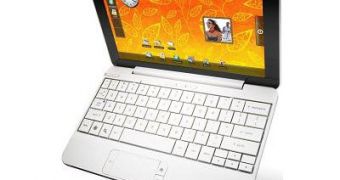Smartbooks aren't a new concept at all, but the rapid growth of the netbook and the rise of tablets have significantly impacted on PC makers' willingness, or eagerness, to experiment with such a concept. The obvious reason is that the chances of survival on today's market are quite questionable. On the other hand, there are still companies whose hold on the industry is strong enough for such an experiment to go by without serious consequences, and HP decided that it was time to try one out.
The HP Compaq Airlife smartbook has been in development for some time and, back in February, it was stated that May would be the period when it would become available, at least in Spain. Now, with the final days of May upon us, reviewers have finally managed to snatch the electronic and test it out. Unfortunately, news isn't all positive.
Smartbooks are defined, more or less, as ultraportable devices with netbook specs but the always-on capabilities of a smartphone. The Airlife has a 1024 x 768-resolution screen and a configuration centered around a Qualcomm Snapdragon QSD8250 ARM chipset, with a 1GHz processor. There are also 512MB of RAM available, as well as 16GB of internal flash storage (expandable via an SD card slot) and connectivity via 3G and WiFi. When looking at these parts, one may place great hopes in this newcomer. Unfortunately, the Airlife doesn't exactly seem to live up to its hype.
Reviews made by Engadget Spanish and Carrypad praised the aesthetic value of the Android 1.6 Compaq Airlife 100, but found it lacking in terms of performance, with most of the blame falling on the software. Besides only supporting a very limited number of video codecs (HD videos don't play well), the smartbook failed to load Gmail fully, among other things. This is quite an unfortunate state of affairs, considering that the overall price is expected to be only a few Euro lower than that of a netbook with a Broadcom Crystal HD accelerator. Perhaps HP has not yet finished optimizing and refining the gadget, but, even so, there doesn't seem to be much chance of it getting affirmed on the US market, even subsidized.

 14 DAY TRIAL //
14 DAY TRIAL //